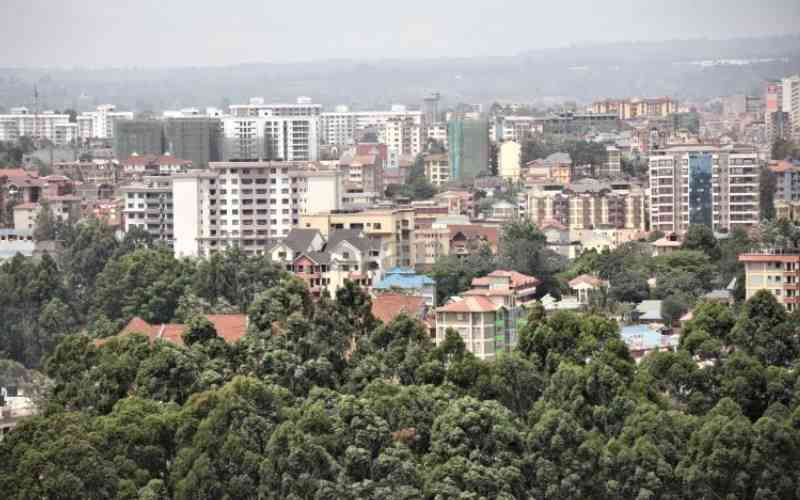By MAORE ITHULA
Imagine you are stuck in a standstill traffic jam on one of the congested streets of Nairobi and all of a sudden your car grows wings and flies off to your destination.
Strange as it may seem, this could soon be a reality when an American company finally produces world’s first flying car, perhaps later this year!
According to reports on Discovery News online journal, such a machine took its final tests in March last year in Boston, USA and could be on sale soon.
This has been achieved is through a US$65 million (Sh5.2b) programme funded by the American Defence Advanced Research Projects Agency, which has contracted Terrafugia AAI Corporation to develop a "roadable" aircraft by 2015.  |
Transition with wings unfolded just before take off. |
The vehicle is required to take off vertically like a helicopter, and have a 280-mile per hour range.
And in March last year, Terrafugia’s Transition took off in what researchers think will be the final tests on the machine. It was reported "Terrafugia’s Transition "is part car, part airplane."
Anyway, the vehicle successfully completed its first test then.
KEY GOAL
The flight was short – just 37 seconds – and right over the runway.
Anna Mracek Dietrich, a Terrafugia co-founder and its chief operating officer, pointed out that flying wasn’t the key goal.
"The first flight is great, but first landing is what matters," she was quoted as saying.
Phil Mateer, a retired Air Force who was the test pilot behind the Transition’s wheel for debut flight also said that that the flight went well. "The flight was remarkably ordinary," Mateer said.
Transition’s aerial debut followed six months of road tests and years of design. The goal is to create an airplane that can be driven to and fro the runway and parked in the family garage at night.
The car version can travel up to 800 kilometers on a single tank of gas while the plane version can cruise at about 115 mph (185 kph) and cover about 644 kilometres worth of turf before needing a refill.
It takes less than 30 seconds for the vehicle’s wings to fold up or extend to transform from plane to car and vice-versa.
"The point of the test was to prove that this could both fly and drive," Deitrich said.
Information from the test flight was to be used to tweak the Transition’s design for a second prototype.
When they are through with making the invention a reality, Terrafugia projects that the vehicles will go for a whopping Sh16m each.
This means come 2012, our airspace could experience some traffic jam of sorts as politicians campaign since the price of a flying car is many times lower than buying, say a helicopter that goes for hundreds of millions. |
| Transition on road. [PHOTOS: Maore Ithula/STANDARD] |
The company has taken deposits for 40 vehicles already, Deitrich said.
FEASIBILITY STUDY
"We are in receipt of orders for 40 vehicles and we expect more to be placed" said Deitrich.
Flying cars have got a long history. In the 1950s, Ford Motor Company of the US conducted a serious feasibility study for a flying car product.
It was concluded that such a product was technically feasible, economically feasible, and had significant realistic markets.
The markets explored included ambulance services, police and emergency services, military uses, and initially, luxury transportation. Some of these markets are now served by light helicopters. However, the flying car explored by Ford was projected to be at least fifty times cheaper.
When Ford approached the US Federal Aviation Administration (FAA) regarding regulatory issues on flying cars, the critical problem that arose was that the then known forms of air traffic control were inadequate for the volume of traffic Ford proposed through flying cars.
At the time, air traffic control consisted of flight numbers, altitudes and headings written on little slips of paper and placed in a case.
Quite possibly computerised traffic control, or some form of directional allocation by altitude could resolve the problems.
Other problems that were identified included intoxicated pilots or pilots who drive and fly without a license. Furthermore, there would be serious concerns among the public in built up urban areas, that malfunctioning or incorrectly operated flying cars could crash into houses, shopping districts or pedestrian areas, severely damaging buildings or killing people.
However, today Terrafugia, posts on the website that Transition is now street- and sky-legal, having cleared the FAA regulatory hurdle for craft classification by weight, and is now classified as "Light Sport Aircraft" so that people eager to fly it would need only 20 hours of flying time to be licensed as qualified pilots-cum-drivers.
Flying cars fall into one of two styles; integrated (all the pieces can be carried in the vehicle), or modular (the pieces to fly are left at the airport when the vehicle is driven).
 The Standard Group Plc is a multi-media organization with investments in media
platforms spanning newspaper print operations, television, radio broadcasting,
digital and online services. The Standard Group is recognized as a leading
multi-media house in Kenya with a key influence in matters of national and
international interest.
The Standard Group Plc is a multi-media organization with investments in media
platforms spanning newspaper print operations, television, radio broadcasting,
digital and online services. The Standard Group is recognized as a leading
multi-media house in Kenya with a key influence in matters of national and
international interest.
 The Standard Group Plc is a multi-media organization with investments in media
platforms spanning newspaper print operations, television, radio broadcasting,
digital and online services. The Standard Group is recognized as a leading
multi-media house in Kenya with a key influence in matters of national and
international interest.
The Standard Group Plc is a multi-media organization with investments in media
platforms spanning newspaper print operations, television, radio broadcasting,
digital and online services. The Standard Group is recognized as a leading
multi-media house in Kenya with a key influence in matters of national and
international interest.











